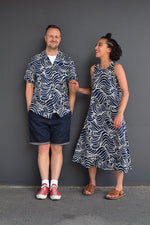13 Dec 2019
It is with great pride that we welcome Sanders Shoes into the Pickings & Parry stable. Since 1873 they have been crafting shoes for all walks o...
It is with great pride that we welcome Sanders Shoes into the Pickings & Parry stable. Since 1873 they have been crafting shoes for all walks of life, from gentry to the military to the average lay man.
Northampton is known for mainly two things; shoes and Alan Moore. But mainly shoes. And rugby, depending on who you talk to. When I was back in the UK this summer I was lucky enough to spend an afternoon at the factory and observe the rich history and processes that go into every piece of footwear.
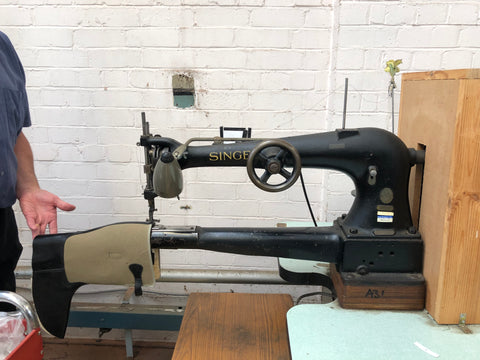
First of all, Northampton has given birth to nearly all of the excellent heritage footwear brands you know today, Tricker’s, Loakes, Grenson, Crockett & Jones, Church’s, John Lobb, Barker, Edward Green…to name but a few. Though hardly any of these brands still make 100% of their shoes there, from start to finish. Sanders however; still do!
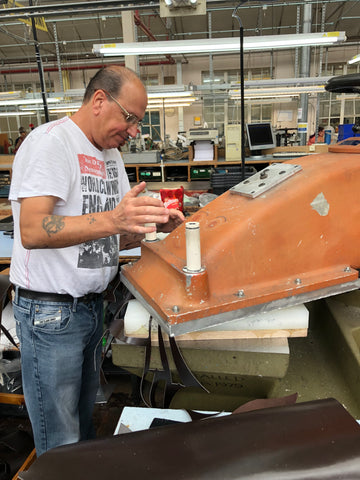
One of the reasons why Northampton is the epicentre of British shoe production is the geography. It has a plentiful supply of water in the form of the River Nene. This meant cheap transport of coal for production and later in 1815 when the Grand Union Canal was built, a direct link to coalfields in the midlands and Manchester, Birmingham and London. It was also surrounded by fields containing cattle for leather that could be tanned. Everything they needed was within reach and business boomed. Before Sanders even established itself, Northampton was making thousands upon thousands of pairs of shoes for the Napoleonic wars, and during that time, a third of all adult males in the city were shoemakers.

In 1873 brother William & Thomas Sanders set up the business. The business steadily and naturally expanded over the decades and they moved to a bigger factory in Rushden, Northampton and continued to employ more people. With the invention of the Goodyear Welting machine by Charles Goodyear, the means of production become far more efficient and consistent and with the outbreak of WWI, over 5000 pairs of boots were leaving the factory every week. After the war had finished this amount of shoes was still being produced and going to paying customers around the UK. Business was booming until disaster struck in 1924 when there was a devastating fire at the factory that decimated the entire operation. Upon rebuilding, they upgraded the whole place to be a superior factory and, just one year later, the business was handed over to William's three sons, William, Leslie & Thomas. Now in the hands of the fourth generation of Sanders', and after decades of military contracts, the business continues to flourish and make beautiful hand made shoes every week.
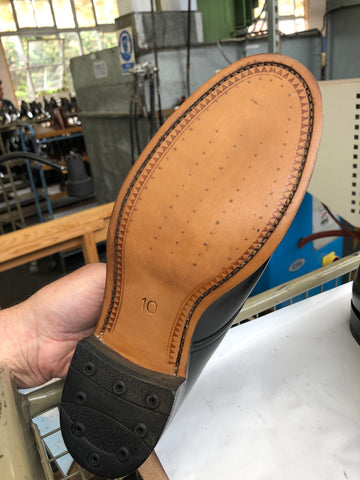
They make around 2000 pairs a week, with 6-8 weeks from start to finish for each shoe. The sheer diversity of styles they make is huge, in the few hours I was there I saw everything from military dress shoes to equestrian boots to brogues to two tone brothel creepers being produced. It is this diversity that sets them apart from their peers and ensures a competitive edge. It felt like a large family whilst I was there with 85% of workers living close enough to still walk to work. In the last decade the Japanese have helped massively grow both the UK & international market. Observing a space where a product is made from start to finish within one building by true locals, was a remarkable and humbling experience. Ordinary people, creating functional, excellently made shoes. I recommend you come and try a pair at your earliest convenience.
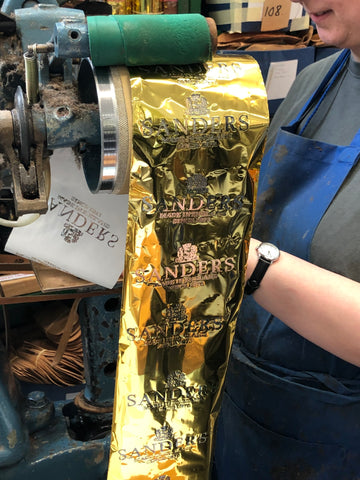
NB: fact I learnt on the day, ‘shoe sizes are based on barleycorns, hence a size 8 is 8 barleycorns long.’
